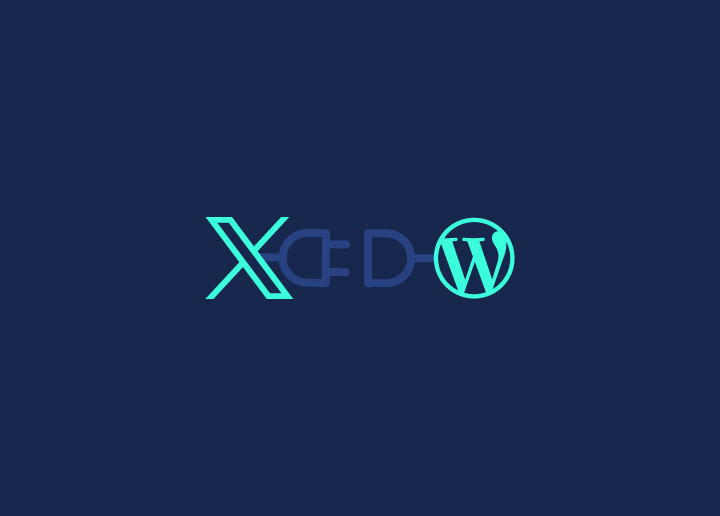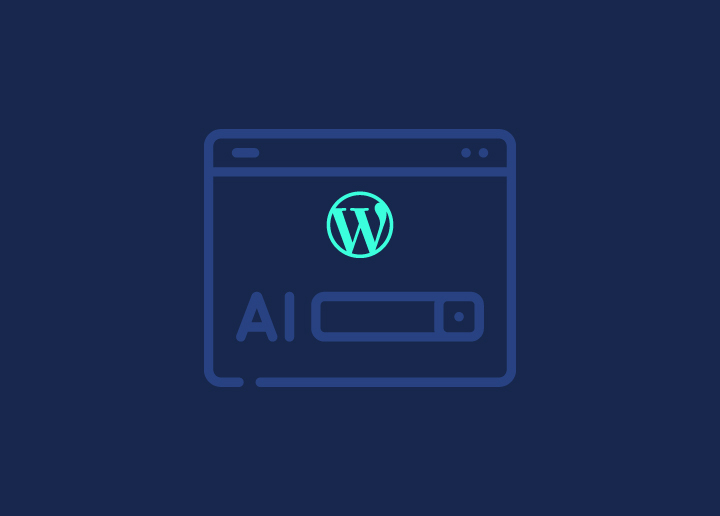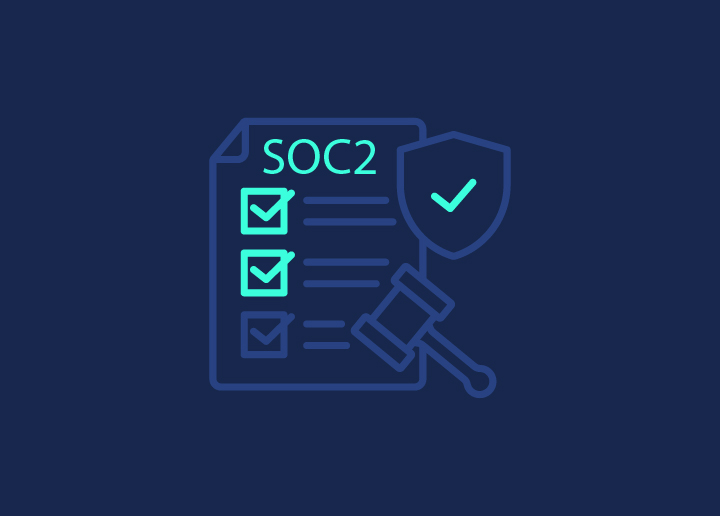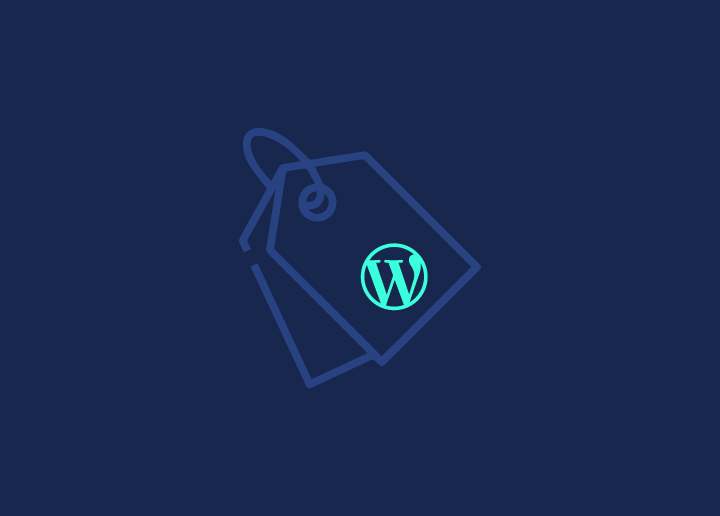Tired of feeling like you’re shouting into the void with your ads? Let’s chat about inbound marketing – a strategy, tried and fully tested with success. With inbound link-building, Instead of chasing customers, you’re drawing them in with content they actually want to see.
The method focuses on creating valuable content that solves problems and answers questions. Think blog posts, videos, podcasts, or whatever format works best for your audience. The best effect is made when people find you naturally, right when they need your help. This approach builds trust and turns visitors into fans, and fans into loyal customers.
For WordPress site owners, the strategy is pure gold. WordPress is a platform designed for content creation, so why not use it to its full potential? Share useful tips, answer common questions, and show off your domain expertise.
By focusing on helpful, friendly content, you’re not just avoiding pushy ads; you’re building genuine relationships with your audience. As you consistently deliver value, you’ll create a snowball effect. Happy customers become your brand champions, spreading the word and bringing more people to your digital doorstep – in short, a win-win situation that can seriously boost your business growth.
Contents
ToggleKey Differences Between Inbound and Outbound Marketing
To truly appreciate the power of inbound marketing, it’s essential to understand how it differs from traditional outbound marketing. Inbound marketing is all about generating content that attracts a specific audience, while outbound marketing uses ads to interrupt a broader audience. Think of outbound marketing as the loud, attention-seeking friend at a party – it’s right in your face, using approaches such as:
- commercials
- paid ads
- TV ads
- cold calling
- direct mail
These traditional methods often include TV ads, cold calling, and direct mail.
In contrast, inbound marketing takes a more subtle, yet highly effective approach. It focuses on creating valuable content that prospects actively seek out. This method is not only more targeted but also tends to be more cost-effective compared to outbound marketing.
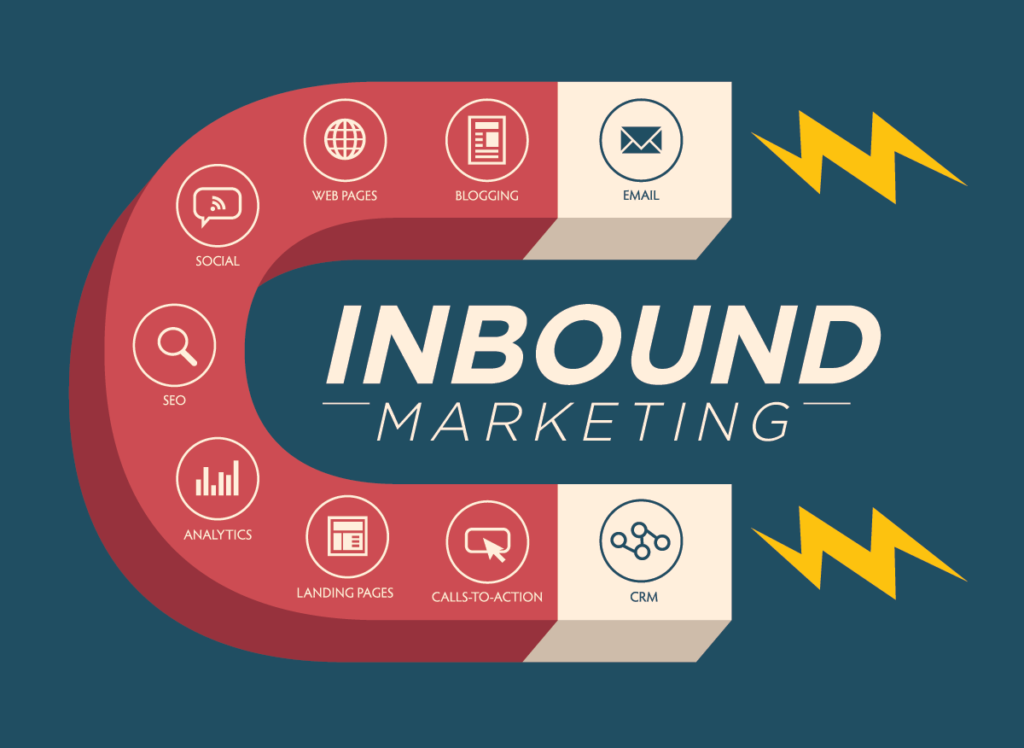
While outbound marketing can quickly raise brand visibility and target a larger audience, inbound marketing builds a lasting connection with potential customers by providing them with the information they need, when they need it. Progressing further, it will become evident how a customer-centric approach fosters stronger relationships with your target audience and results in improved outcomes.
Also Learn: What Is An Outbound Link?
At a glance, here is what sets them apart:
| Aspect | Inbound Marketing | Outbound Marketing |
| Approach | Attracts a specific audience with valuable content | Interrupts a broad audience with ads |
| Strategy | Creates content that prospects actively seek out | Uses commercials, paid ads, TV ads, cold calling, direct mail |
| Audience Engagement | Builds lasting connections by providing needed information | Quick visibility, broad targeting |
| Cost-Effectiveness | More cost-effective due to targeted approach | Often more expensive due to high ad costs |
| Long-term Impact | Fosters stronger relationships and improved outcomes | Short-term visibility, less enduring relationships |
| Examples | Blog posts, videos, podcasts, social media content | Commercials, paid ads, TV ads, cold calling, direct mail |
| Customer Interaction | Customer-centric, allows for two-way communication | Company-centric, primarily one-way communication |
| Content Lifespan | Content can provide long-term value and continue attracting leads | Ads have a limited lifespan and impact |
| Lead Generation | Generates organic leads through search and social media | Relies on purchased leads and broad targeting |
| Trust Building | Builds trust through informative and helpful content | Can be perceived as intrusive or disruptive |
Relevant Reading: Mapping the Stages and Strategies for B2B Customer Journey
Why Inbound Marketing is Important
One of the primary reasons for inbound marketing and digital marketing growing is their cost-effectiveness and ability to generate higher quality leads compared to traditional outbound marketing tactics. This is particularly crucial for businesses looking to maximize their marketing budget while attracting customers who are genuinely interested in their products or services, making inbound marketing important.
Inbound marketing shines in its ability to:
- Create quality content that attracts customers organically, proving that inbound marketing works
- Convert more leads into buyers
- Establish a pattern of long-term loyalty
- Increase the likelihood of a purchase by 131% when consumers have consumed educational content
Perhaps one of the most significant benefits of inbound marketing is its capacity to build customer trust. By creating content that educates rather than immediately sells, businesses can establish themselves as thought leaders in their industry. This authenticity is crucial, as 88% of consumers say it’s important when deciding which brands they like and support (Stackla, 2021).
Moreover, inbound marketing improves customer engagement by providing personalized content throughout the buyer’s journey, ensuring that potential customers receive relevant information at every stage of their decision-making process.
Not Sure How to Start Inbound Marketing on Your WordPress Sites?
Our creatives can help you there! Get content development ideas, custom design templates for your WordPress site for maximum impact, tune-ups for your existing pages, and more.
Three Stages of Inbound Marketing

Inbound marketing is not a one-time effort but a comprehensive process designed to guide individuals through their customer journey, from awareness to consideration and ultimately, decision-making. This journey is broken down into three crucial stages: Attract, Engage, and Delight. Each of these stages plays a vital role in converting prospects into loyal customers and advocates for your brand.
Let’s examine each stage of the inbound marketing methodology in more detail.
Stage 1: Attracting the Right Audience
The first and arguably most critical stage of inbound marketing is attracting the right audience. This process begins with a solid foundation in Search Engine Optimization (SEO). SEO is the practice of optimizing your website to rank high in search engine results by using relevant keywords, creating a mobile-friendly site, and improving loading speeds. By implementing effective SEO strategies, you can ensure that your content is found by those actively searching for solutions you provide.
Understanding your customer needs is paramount in creating content that resonates with your target audience. Conducting customer interviews can provide valuable insights that help you create tailored content. This persona-driven approach to content creation can significantly increase your chances of converting readers into high-quality leads. For instance, Runner’s World optimizes its URLs, title tags, and meta descriptions to ensure high rankings for various running-related keywords, while Chewy ranks high in organic search results for terms like ‘dog food’ by using detailed product descriptions, multiple images, and user-generated content.
Content marketing plays a crucial role in attracting the right audience. Creating and distributing valuable, relevant, and consistent content is a key part of attracting a clearly defined audience. This process involves understanding what your audience is looking for and providing content that meets their needs. Blog posts, ebooks, and white papers are all effective forms of content that can address the needs and interests of your target audience. One innovative way to attract new customers is by providing guest posts from authoritative figures in your industry. By aligning your content with the buyer’s journey, you ensure that you’re providing relevant information at each stage, ultimately increasing the likelihood of converting visitors into leads and customers.
Also Read: Ways To Increase Your Bottom Of The Funnel Conversions
Stage 2: Engaging Potential Customers
Once you’ve successfully attracted potential customers to your digital doorstep, the next crucial stage is engagement. This phase is all about nurturing relationships with these prospects by presenting insights and solutions that align with their pain points and goals. The key here is to provide value at every interaction, encouraging them to take the next step in their buyer’s journey.
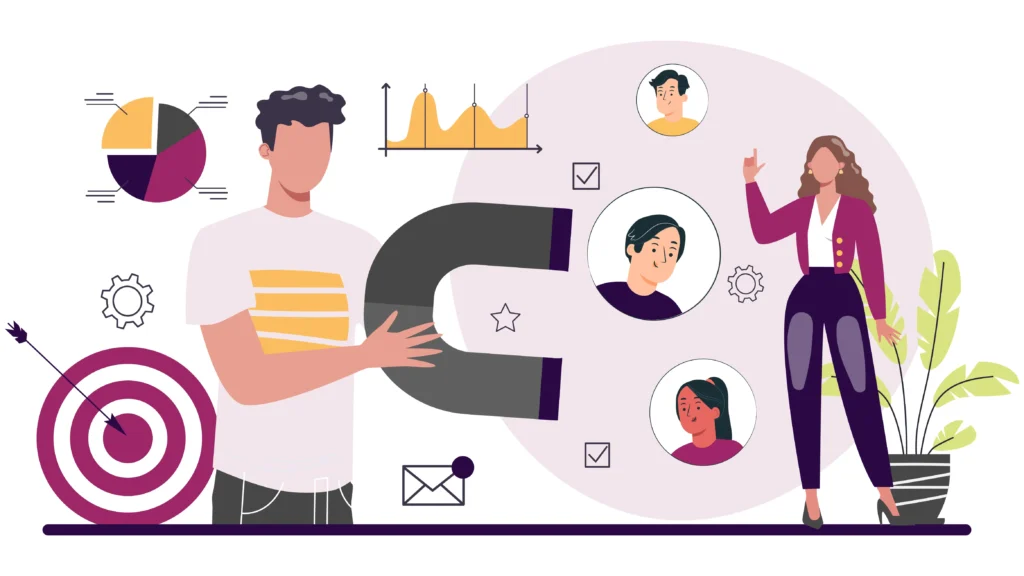
One effective strategy for engaging potential customers is through webinars and online events. These platforms offer a unique opportunity to:
- Connect directly with your audience
- Build relationships
- Create video engagement
- Answer pressing questions in real-time
By showcasing your expertise and providing valuable information through these interactive mediums, you can establish trust and credibility with your prospects. This approach not only helps in educating your audience but also positions your brand as a thought leader in your industry, making it more likely for potential customers to choose your products or services when they’re ready to make a purchase decision.
Also Check Out: Ways Google’s SGE Will Affect Your Content Strategy
Stage 3: Delighting Existing Customers
The final stage of the inbound marketing methodology, but certainly not the least important, is delighting existing customers. This phase is crucial for turning satisfied customers into brand advocates who will enthusiastically recommend your products and services to others. At the heart of this stage is providing exceptional customer service, where support and assistance are offered to help customers succeed with your product. This level of care and attention ensures that customers feel valued long after their initial purchase.
Maintaining customer satisfaction is an ongoing process that requires consistent and thoughtful follow-ups. This could involve regular check-ins, personalized communications, or exclusive offers that make customers feel special and appreciated. By going above and beyond to delight your customers, you’re not only increasing the likelihood of repeat business but also cultivating a loyal customer base that will become your most powerful marketing asset.
Remember, in inbound marketing, your existing customers can become your most effective brand ambassadors, driving organic growth through word-of-mouth recommendations and positive reviews, as it did for us!
Read More: How To Execute Content Marketing With Link Building?
Effective Inbound Marketing Strategies

Having explored the stages of inbound marketing, we can now investigate the strategies that can truly enhance your inbound efforts. At the core of successful inbound marketing lies the production of value-driven content. This approach is crucial in addressing customer pain points and providing valuable insights that resonate with your target audience. By focusing on creating content that truly matters to your prospects and customers, you’re not just attracting attention – you’re building trust and establishing your brand as a go-to resource in your industry.
However, creating great content is just the beginning. To maximize the impact of your inbound marketing efforts, it’s essential to leverage a multichannel approach. This means not only optimizing your content for search engines to enhance visibility but also maintaining a consistent social media presence to engage with your audience effectively. Delving into specific strategies reveals how integrating these elements can create a robust inbound marketing mechanism that attracts, engages, and delights your audience across various touchpoints.
Also Relevant: The Ultimate Guide To Brand Archetype & Building Your Brand
Creating High-Quality Content

At the heart of any successful inbound marketing strategy lies high-quality content. This is the fuel that powers your entire inbound marketing engine, attracting the right audience and establishing your business as a thought leader in your industry. The key to creating content that resonates with your audience is to deploy a variety of formats, including blog posts, infographics, and videos. Each of these formats serves a unique purpose and caters to different preferences within your target audience.
To ensure your content strategy is effective, it’s crucial to organize your efforts with a powerful content calendar. This helps you maintain consistency in delivering value to your audience, which is essential for building trust and keeping your audience engaged over time. Remember, the goal is not just to create content for the sake of it, but to provide information that your audience finds genuinely useful and relevant to their needs.
Let’s look at some real-world examples of successful content strategies. Moz’s ‘Whiteboard Friday’ video series is a prime example of how to provide valuable, educational content consistently. These videos offer SEO tips and strategies, accompanied by transcripts that improve both SEO and viewer engagement.
Another great example is Groove’s blog, which features data-driven, conversational posts complete with examples, charts, and graphs. This approach has established Groove as a reliable source for start-up advice.
Lastly, thredUP uses video content to tell compelling stories about sustainability and fashion, effectively changing perceptions about second-hand clothing. These examples demonstrate how diverse content types, when executed well, can significantly boost your inbound marketing efforts and help you connect with your audience on a deeper level.
More to Learn: What Is Branding? Learn About The Components Of Branding.
Leveraging Social Media

In the realm of inbound marketing, social media has emerged as a powerhouse for building and maintaining a strong online presence. By creating engagement and fostering a community around your brand, social media platforms offer unparalleled opportunities to share content, engage with followers, and participate in conversations that matter to your audience. This approach not only helps build trust and authority but also leverages the power of word-of-mouth marketing.
The beauty of social media lies in its versatility. It allows businesses to provide visual context, interact with followers in real-time, and share or promote content across various platforms. Engaging with users on these platforms is a surefire way to build relationships and raise brand awareness. To gauge the effectiveness of your social media efforts, keep an eye on engagement metrics such as shares, comments, and mentions. These indicators show how interactive and impactful your social media content is.
Let’s look at some real-world examples of successful social media strategies in inbound marketing:
- Ryze engages audiences through platforms like Instagram and Facebook, creating succinct video content and collaborating with wellness and health influencers.
- Birchbox uses various social media platforms to showcase colorful product images and videos, while focusing on engaging beauty advice.
- HelloFresh leverages social media listening to gather customer feedback, which helps them improve recipes, packaging, and delivery routes.
These examples demonstrate how different brands can tailor their social media strategies to their unique audience and business goals, all while adhering to the principles of inbound marketing.
Read More: Social Media Strategies For Your Small Business
Utilizing Email Marketing
Email marketing remains a cornerstone of effective inbound marketing strategies. When done right, it involves:
- Building a list of subscribers
- Nurturing them with customized content and offers
- Segmenting the audience
- Creating automated sequences
- Personalizing messages with subscriber-specific data
This personalized approach is crucial, as 74% of buyers say personalized content makes them more likely to convert. To craft tailored email content that resonates with your audience, it’s essential to understand their interests and needs.
Let’s look at a successful example of email marketing in action. Uber’s email strategy includes personalized greetings and region-specific content to maintain customer engagement. This approach demonstrates how personalization can be effectively used to make each subscriber feel valued and understood. To measure the success of your email campaigns, keep an eye on metrics such as open rates, click-through rates (CTR), and unsubscribe rates. CTR, in particular, can show which products or content readers find most interesting, helping you refine your email strategy over time. By consistently delivering value through your email campaigns and using data to inform your strategy, you can turn your email list into a powerful tool for nurturing leads and driving conversions.
Important Read: A Guide to Drip Campaigns – Email Marketing
Measuring Inbound Marketing Success
Measuring the success of your inbound marketing efforts is crucial for refining your strategies and optimizing your campaigns. While it’s true that inbound marketing ROI can be challenging to track, as it often takes time for content to generate leads, the data and insights you gather are invaluable for refining your marketing strategies and optimizing campaigns.
One of the primary tools for tracking website performance is Google Analytics, which monitors website traffic, visitor patterns for behavioral targetting, and traffic sources. This data can be visualized through Website Traffic Dashboards, showing visitor numbers, traffic sources, popular pages, and time spent on site. Pay close attention to metrics like dwell time (time spent on a page), which indicates if visitors find your content relevant and interesting, and the ratio of new versus returning visitors, which helps determine how engaging your content is for repeat visits.
Beyond website analytics, it’s important to track lead generation metrics. Lead Generation Dashboards can help you monitor:
- The number of leads
- Their sources
- Conversion rates
- Lead quality
These metrics are crucial for assessing the effectiveness of your lead-generation campaigns.
Additionally, don’t overlook the importance of email marketing metrics. Email Marketing Dashboards can display:
- Open rates
- Click-through rates
- Unsubscribe rates
- Conversion rates
All of these metrics are essential for evaluating email campaign success. By consistently monitoring these metrics and adjusting your strategies accordingly, you can ensure that your inbound marketing efforts are continually improving and delivering results.
Tools and Software for Inbound Marketing
Let’s explore some of the most popular and effective tools available for inbound marketers.
For SEO, some useful tools include:
- SE Ranking: offers comprehensive features including keyword research, competitor analysis, and backlink tracking
- Ahrefs: known for its link analysis capabilities and comprehensive keyword research and technical site audit functions

- SEMRush: highly recommended for its wide range of features, including keyword research, on-site SEO, competitor analysis, local SEO, content strategy, and link building
- Google Search Console: an invaluable free tool that offers insights into search queries, clicks, impressions, and ranking positions.
Also Check: Google Search Console Guide – SEO Hacks
These tools can greatly assist in optimizing your website for search engines.
When it comes to email marketing and customer relationship management (CRM), there are several powerful platforms to choose from. Some popular options include:
- Mailchimp: This platform is great for creating and managing email campaigns, providing analytics on open rates, CTR, and conversions.
- HubSpot: HubSpot offers a full suite of inbound marketing tools, including CRM, email marketing, forms, landing pages, live chat, blog, PPC ad management, and contact management.
- Marketo: Marketo focuses on email marketing, marketing automation, landing pages, forms, A/B testing, and account-based marketing.
By leveraging these tools effectively, you can streamline your inbound marketing processes, gain valuable insights, and ultimately drive better results for your business.
Important Resources: Top Lead Generation Plugins For WordPress
Conclusion
Inbound marketing is revolutionizing how businesses connect with their audience. This approach enables companies to cultivate meaningful relationships, establish trust, and drive sustainable growth. As technology evolves and consumer behaviors shift, inbound marketing will continuously adapt, providing innovative ways to engage and delight customers. The future of marketing is rooted in providing value, fostering genuine connections, and empowering customers to make informed decisions.








